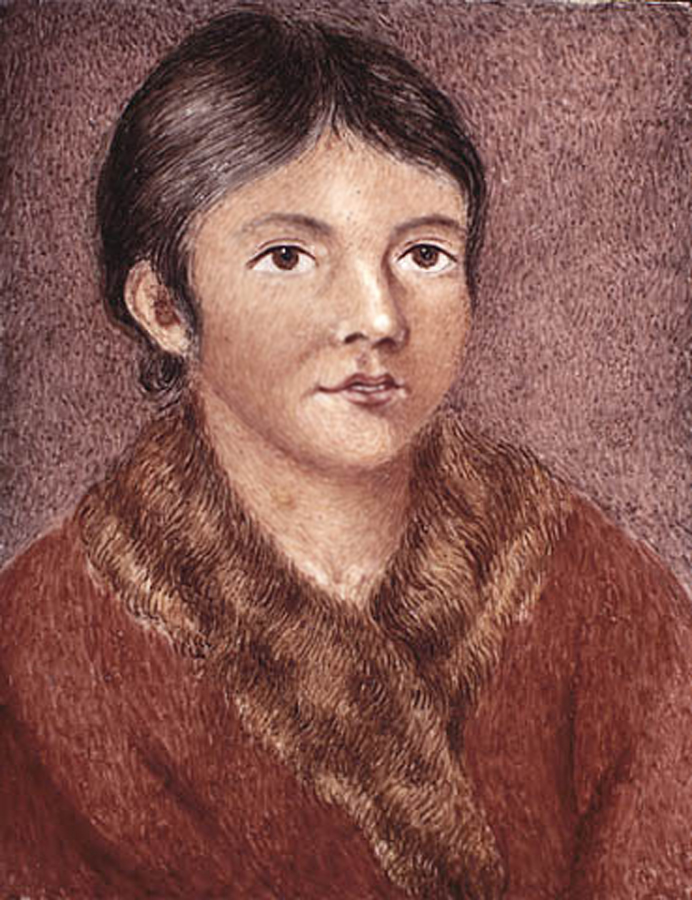When the first Europeans arrived in Newfoundland, the inhabitants were the Beothuk, who were scattered across the northeastern, western, and southern coasts of Newfoundland. They had a pre-contact population of only about 500 to 1000. They were to suffer mightily from the European invasion, and by the early 1800s, the last of their race went extinct.
The Beothuk were organized in bands ranging from 35 to 50 individuals belonging to 7-10 families. “In spring and summer, they lived on the coast, pursued marine mammals and seabirds, and caught salmon and other seafood; in fall and winter they moved to small camps or to settlements in the woodland interior, where they hunted caribou and other fur-bearing animals” (Marshall, 1966).
In late winter and early spring, they would hunt harp seals on the coast, catch smelt in the rivers in May, and then take advantage of the salmon runs in late summer. Caribou were hunted during their fall migrations.The Beothuk would construct fences consisting of long lines of poles with flapping straps of skin attached to them and then herd the caribou into the water where they were easier to catch and slaughter. They also hunted beavers, martens, and otters for their furs.
The Beothuk were bow hunters on land and fished with harpoons and spears. They built beautiful, lightweight, easily reparable birch bark canoes, some of which were capable of making long sea trips. They also used birch bark to make light, strong containers for food and water.
Before the Europeans arrived, the Beothuk used stone points to tip their arrows, spears, harpoons, knives, and scrapers. After the Europeans began establishing fishing camps, the Beothuk began to salvage metal objects that the fisherman left behind and reworked nails, fishhooks, and scrapes of iron into arrowheads, blades, and other tools. By the end of the 17th century, the Beothuk had largely replaced their stone technology.
The Beothuk carved bone, antler and ivory pendants intricately decorated with carved patterns. Many of these items were recovered from grave sites in caves or rock shelters in the late 19th and early 20th centuries.
The Beothuk traditionally lived in temporary, cone-shaped structures made by placing sheets of bark or hides over a framework of light poles. Spruce boughs were sometimes piled around the perimeter of the tipi for added insulation.
They also built special houses for feasts that were oval in shape. These could be 9 – 10 meters in length and 4-5 meters wide and had a hearth running down the middle. They feasted on cakes made of caribou bone marrow, produced by grinding up the bones, boiling them, and then skimming off the marrow and collagen that rose to the surface and pressing it into cakes. The Beothuk made widespread use of powdered hematite, or red ochre, which they painted on their canoes, artifacts, and their bodies. In their gravesites were found intricately carved bone, antler, and ivory.
The Beothuk adorned themselves dramatically. As Marshall (1998) describes: “The Beothuk traditionally painted their faces and bodies with a mixture of red ochre and grease … The Beothuk’s major garment – worn by men as well as women – was a coat or cloak made from several caribou skins sewn together into one large piece. It was thrown over the shoulders, wrapped around the body and held in place by a belt. The hairy side was turned towards the body for greater warmth … Footwear consisted of leg-skin boots and moccasins. Leg-skin boots were made from the hide of caribou shanks left in their cylindrical shape and sewn together at the lower end to form the toe part. Moccasins, or ankle boots, were produced from three pieces of caribou leather that formed a sole, vamp, and cuff. They were secured by a drawstring thong. Some boots had a finely fringed band sewn to the upper edge. A cone-shaped projection at the heel appears to be peculiar to the Beothuk design“
Beothuk coats did not have sleeves and the arms were protected with separate covers, tied together under the outer robe. The Beothuk’s winter garb also included mittens.
Beothuk’s Response to Europeans
While there is evidence of some early friendly interactions between the Beothuk and the Europeans, the Beothuk were greatly outnumbered during the fishing season and mostly avoided the Europeans. As time went on, most of their contact with Europeans became the scavenging of the seasonally abandoned fishing rooms.
Before the arrival of the Europeans, the Beothuk inhabited most of the island. By the mid-1700s, the majority had moved to secluded Notre Dame Bay and the watershed of the Exploits River and Red Indian Lake to escape the encroachments of the Europeans. Eventually, the Europeans also moved into these regions to hunt and fish, leading to acts of violence on both sides.
The Beothuk did not have guns, so were largely unable to defend themselves against the European onslaught. Their population numbers began to steadily decline through starvation, European diseases, and harassment from Europeans. Other native groups began to move onto the island and compete with the Beothuk. The Beothuk went extinct in the late 1820s.
Illustration: Demasduit, a Beothuk woman captured in Newfoundland in 1819. Artist – Lady Henrietta Martha Hamilton (ca. 1780 -1857 )
Bibliography
Holly Jr, D. H. (2000). The Beothuk on the eve of their extinction. Arctic Anthropology, 79-95.
Marshall, I. (1998) Beliefs and practices. Beothuk Institute, St. John’s, Newfoundland. https://beothukinstitute.ca/the-beothuk/beliefs-and-practices/
Pastore, R.T. (1998) Beothuk culture. The Newfoundland and Labrador Heritage Website https://www.heritage.nf.ca/articles/indigenous/beothuk-culture.php
Tuck, J. A., Gallant, D.J. and Filice, M. (2022) Beothuk. The Canadian Encyclopedia. https://www.thecanadianencyclopedia.ca/en/article/beothuk
